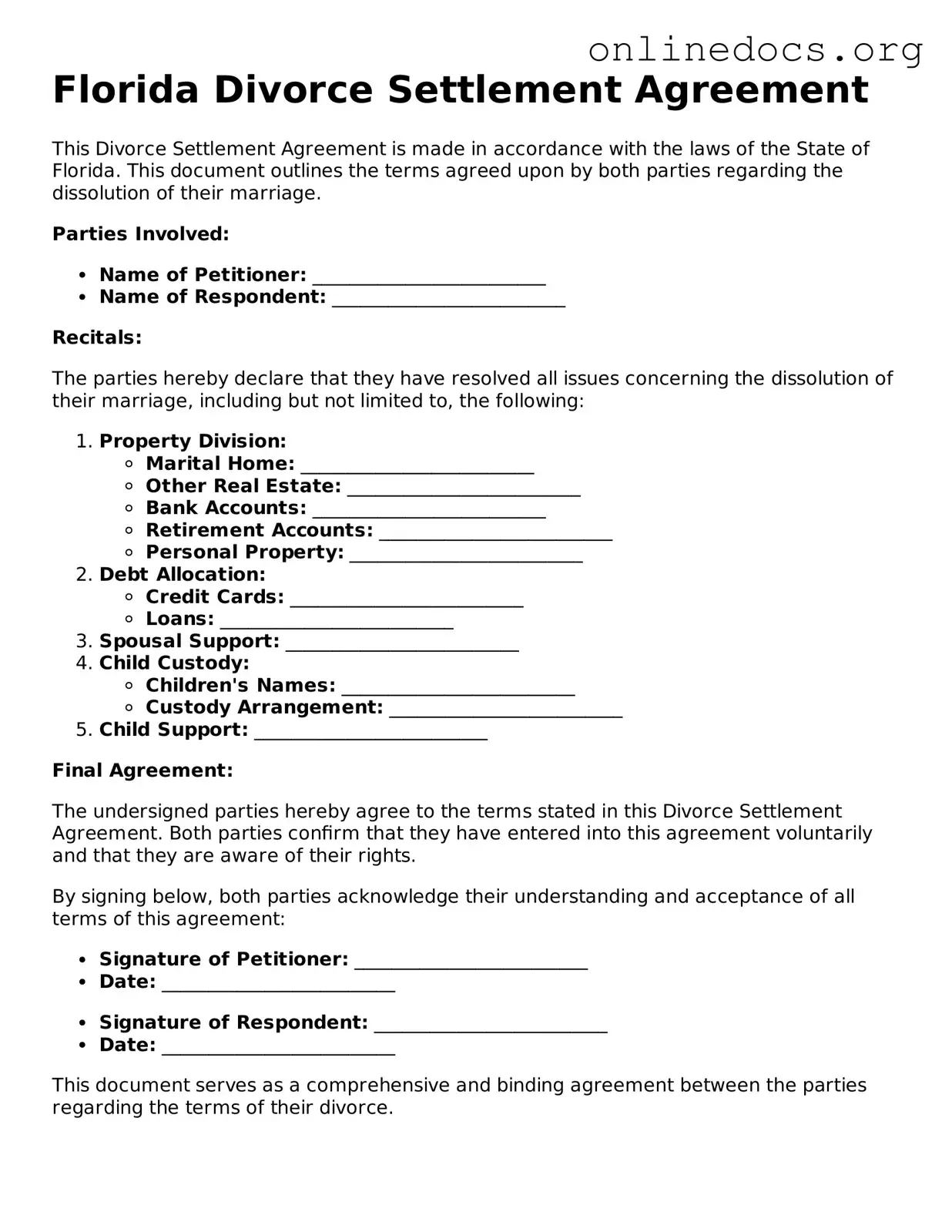The Florida Divorce Settlement Agreement form shares similarities with a Marital Settlement Agreement. Both documents outline the terms of a divorce, including the division of assets, debts, and child custody arrangements. While the Divorce Settlement Agreement is specific to Florida, a Marital Settlement Agreement can be used in various states. Each serves to formalize the understanding between spouses, ensuring that both parties are clear on their rights and obligations post-divorce.
Another document akin to the Divorce Settlement Agreement is the Child Custody Agreement. This document specifically addresses the arrangements for the care and custody of children following a divorce. It details visitation schedules, decision-making responsibilities, and any financial support obligations. Like the Divorce Settlement Agreement, it aims to provide clarity and stability for children and parents alike, ensuring that their needs are prioritized.
The California Motorcycle Bill of Sale form is a vital document for anyone looking to transfer motorcycle ownership, providing clarity and legal reassurance in the process. Essential details about the transaction, such as information on the seller, buyer, and motorcycle, are recorded to avoid any ambiguities during the sale. For those interested in obtaining this important form, the document is available here.
The Separation Agreement also bears resemblance to the Divorce Settlement Agreement. This document is often used by couples who wish to live apart but are not yet ready to divorce. It outlines the same types of issues, such as property division and support, allowing couples to establish a clear framework for their separation. If the couple later decides to divorce, the terms of the Separation Agreement can often be incorporated into the Divorce Settlement Agreement.
A Property Settlement Agreement is another similar document. This agreement focuses specifically on the division of marital property and debts. It is particularly important in states where equitable distribution is practiced, as it helps to clarify how assets will be divided. Like the Divorce Settlement Agreement, it aims to prevent disputes and provide a clear understanding of each party's rights regarding property after the marriage ends.
The Parenting Plan is closely related to the Divorce Settlement Agreement, especially in cases involving children. This document outlines how parents will manage their responsibilities and decisions regarding their children’s upbringing. It includes details about education, healthcare, and extracurricular activities. While the Divorce Settlement Agreement covers broader divorce issues, the Parenting Plan zeroes in on the specifics of co-parenting, ensuring that both parents are aligned in their approach.
A Spousal Support Agreement can also be compared to the Divorce Settlement Agreement. This document specifically addresses financial support from one spouse to another after separation or divorce. It defines the amount and duration of support, similar to how the Divorce Settlement Agreement outlines financial obligations. This agreement ensures that both parties understand their financial responsibilities, helping to avoid future conflicts.
Lastly, the Prenuptial Agreement is another document that shares similarities with the Divorce Settlement Agreement. Although it is created before marriage, it serves to outline how assets and responsibilities will be handled in the event of a divorce. Both documents aim to clarify the financial and property rights of each party, reducing the potential for disputes later on. While the Prenuptial Agreement is proactive, the Divorce Settlement Agreement is a reactive measure that addresses the realities of a marriage that has ended.
